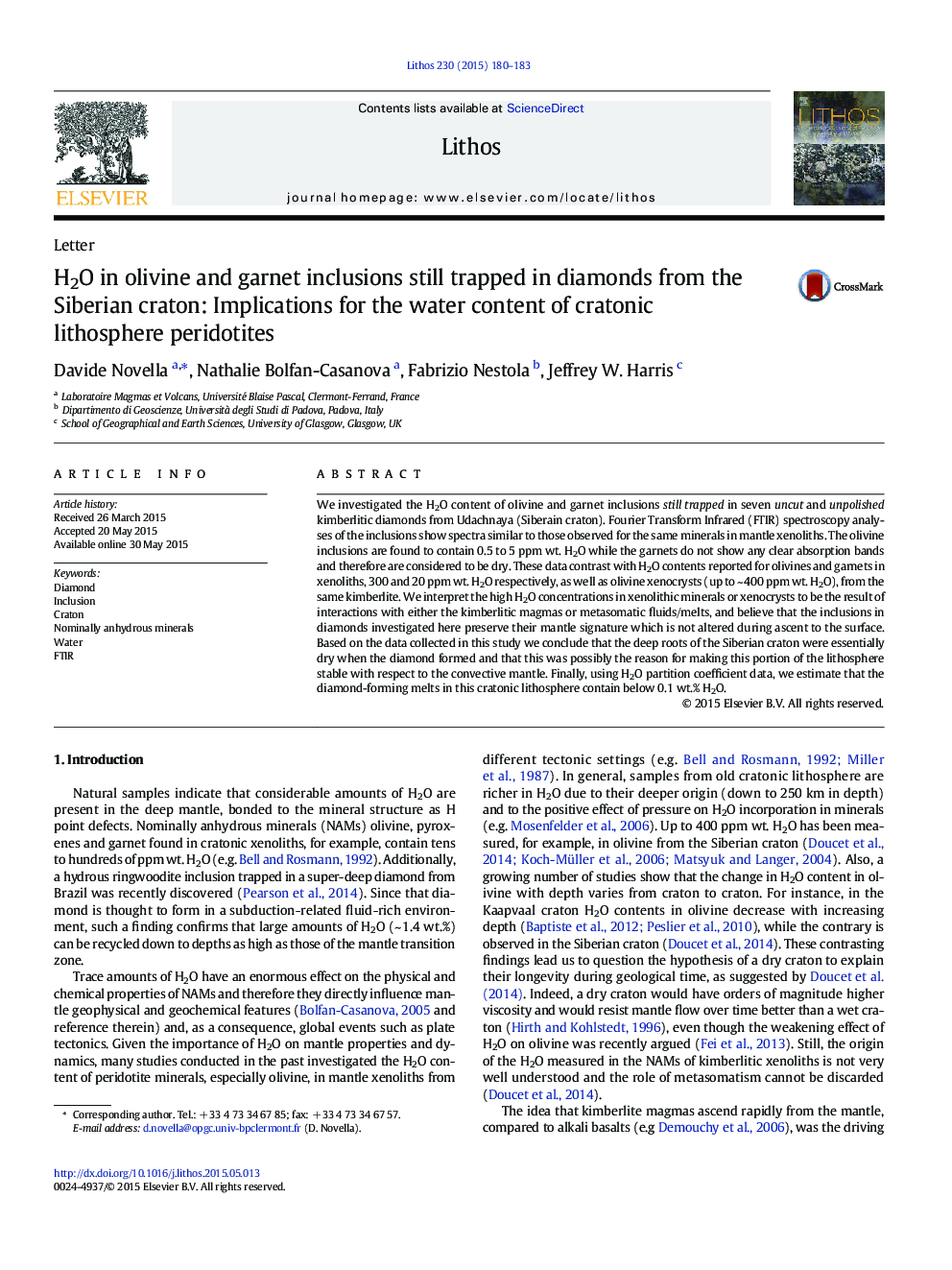| Article ID | Journal | Published Year | Pages | File Type |
|---|---|---|---|---|
| 4715664 | Lithos | 2015 | 4 Pages |
•FTIR analyses of olivine and garnet inclusions still trapped in Siberian diamonds•Cratonic olivine H2O contents range from 0.5 to 5 ppm wt.•Garnet inclusions do not show OH absorption bands.•Diamond forming melts in the Siberian craton have low activity of H2O.
We investigated the H2O content of olivine and garnet inclusions still trapped in seven uncut and unpolished kimberlitic diamonds from Udachnaya (Siberain craton). Fourier Transform Infrared (FTIR) spectroscopy analyses of the inclusions show spectra similar to those observed for the same minerals in mantle xenoliths. The olivine inclusions are found to contain 0.5 to 5 ppm wt. H2O while the garnets do not show any clear absorption bands and therefore are considered to be dry. These data contrast with H2O contents reported for olivines and garnets in xenoliths, 300 and 20 ppm wt. H2O respectively, as well as olivine xenocrysts (up to ~ 400 ppm wt. H2O), from the same kimberlite. We interpret the high H2O concentrations in xenolithic minerals or xenocrysts to be the result of interactions with either the kimberlitic magmas or metasomatic fluids/melts, and believe that the inclusions in diamonds investigated here preserve their mantle signature which is not altered during ascent to the surface. Based on the data collected in this study we conclude that the deep roots of the Siberian craton were essentially dry when the diamond formed and that this was possibly the reason for making this portion of the lithosphere stable with respect to the convective mantle. Finally, using H2O partition coefficient data, we estimate that the diamond-forming melts in this cratonic lithosphere contain below 0.1 wt.% H2O.
